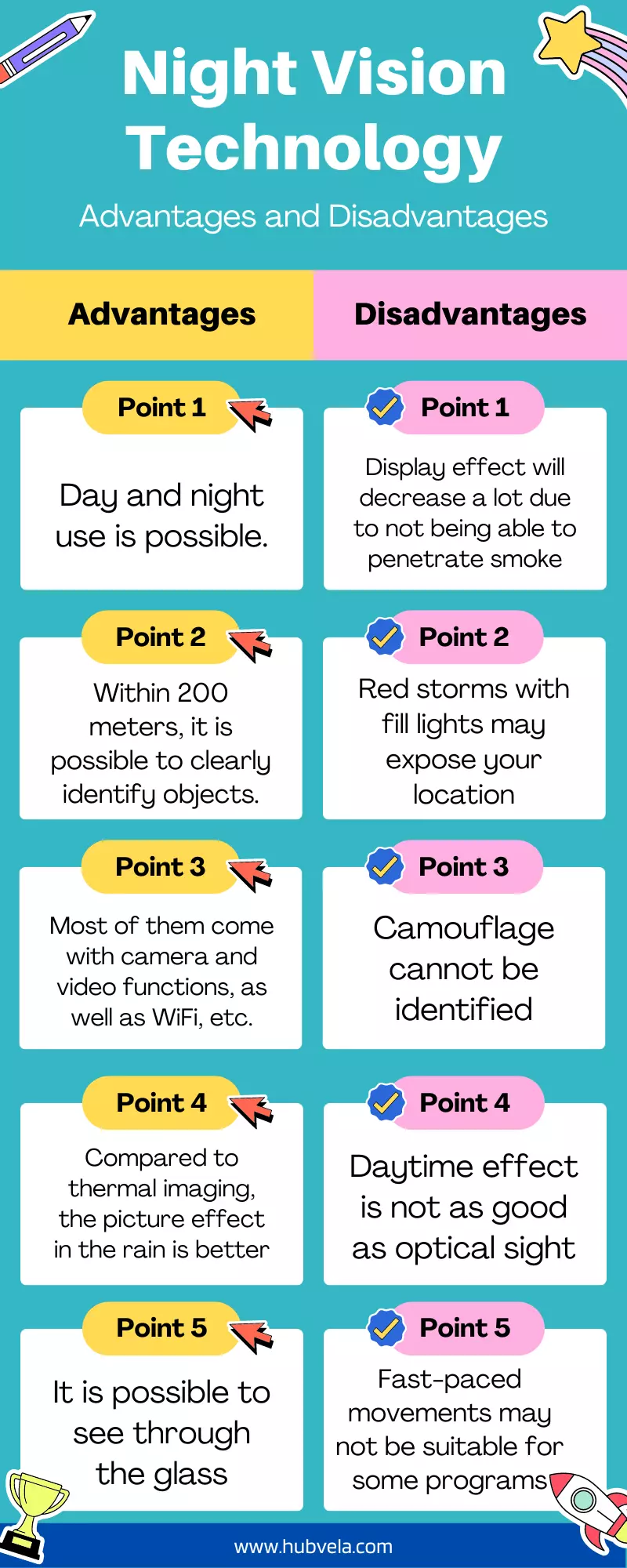Night vision technology has been a fascinating revelation of modernity, with its ability to enhance our vision in the dark. It has proven especially useful for military operations, night surveillance and for many other purposes.
But like everything else, it does come with its own set of pros and cons that need to be assessed before investing in this technology.
This article explores the advantages and disadvantages of the use of night vision technology in detail.
The benefits range from providing enhanced visibility at night to better target acquisition during operations carried out under dark conditions; however, it also carries certain limitations such as requiring additional power sources or having shorter ranges due to objects blocking the view.
Furthermore, they tend to be expensive and require frequent maintenance over time. Ultimately, understanding these factors will help determine if investing in this futuristic tech is worth it or not!

--Advertisement--
Image intensification
Image intensification is a cutting-edge night vision technology that has revolutionized the way we observe our universe at night.
Through its innovative use of light-amplifying optics, image intensification allows us to see in the dark like never before.
It works by collecting ambient light from starlight and moonlight, and then amplifying it thousands of times to create a visible picture on an electronic display.
This makes it possible to observe details that would otherwise be too faint or too distant for human eyesight alone.
With this advanced technology, we are able to explore the depths of space with unprecedented clarity and accuracy, giving astronomers an incredibly powerful tool to study our cosmos without relying on artificial light sources.
Thermal Imaging
Instead of simply reflecting light, this method captures the upper portion of the infrared spectrum that is emitted by objects as heat energy.
Different levels of infrared radiation are used to detect temperature. Light cannot be seen in the dark, but it can still be felt as heat under the right conditions if the intensity of the light is sufficient.
The primary disadvantages of thermal imaging are its high cost, limited quality and inability to see target objects if obstacles are transparent.
Night vision devices
- Scope – An optical device that can be mounted on a weapon or carried as a handheld device.
- Goggles – Binoculars and worn on the head.
- Cameras – Captured images and videos can be recorded with this device.
Advantages and Disadvantages of Night Vision Technology Infographic

Advantages of Night Vision Technology
- Day and night use is possible.
- Within 200 meters, it is possible to clearly identify objects.
- Most of them come with camera and video functions, as well as WiFi, etc.
- Instant booting, even quick start
- It is possible to see through the glass
- Compared to thermal imaging, the picture effect in the rain is better
- There are no high-level environmental requirements and the device can be used for a long time.
Disadvantages of Night Vision Technology
- Display effect will decrease a lot due to not being able to penetrate smoke
- Red storms with fill lights may expose your location
- Camouflage cannot be identified
- Daytime effect is not as good as optical sight
- Fast-paced movements may not be suitable for some programs
Conclusion on the Advantages and Disadvantages of Night Vision Technology
Night vision technology is a remarkable advancement that has revolutionized the way people think about and interact with the dark.
It offers advantages such as improved safety and situational awareness, increased convenience of activities performed in darkness, and even added fun to night-time experiences.
However, it also brings disadvantages like limited depth perception, potential eye health issues, and even a change in social dynamics.
Ultimately, when it comes to night vision technology, one must weigh the pros and cons carefully before making any decisions.


